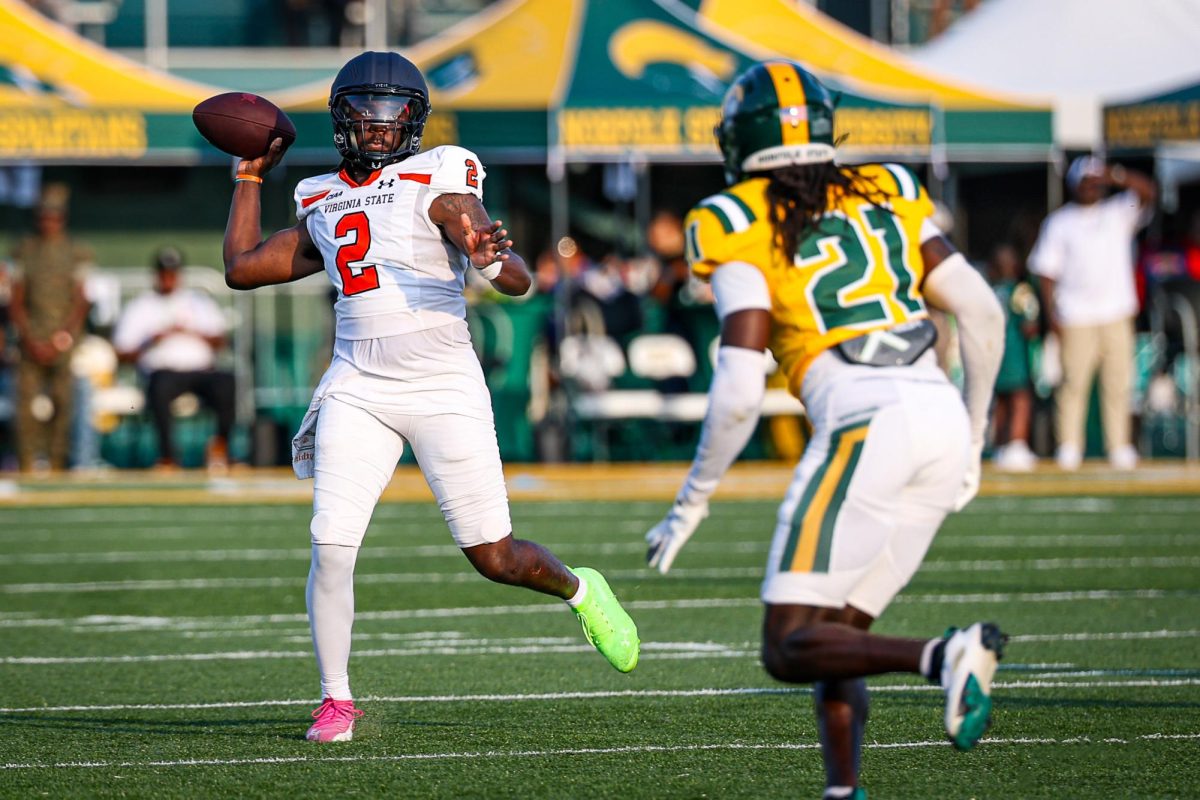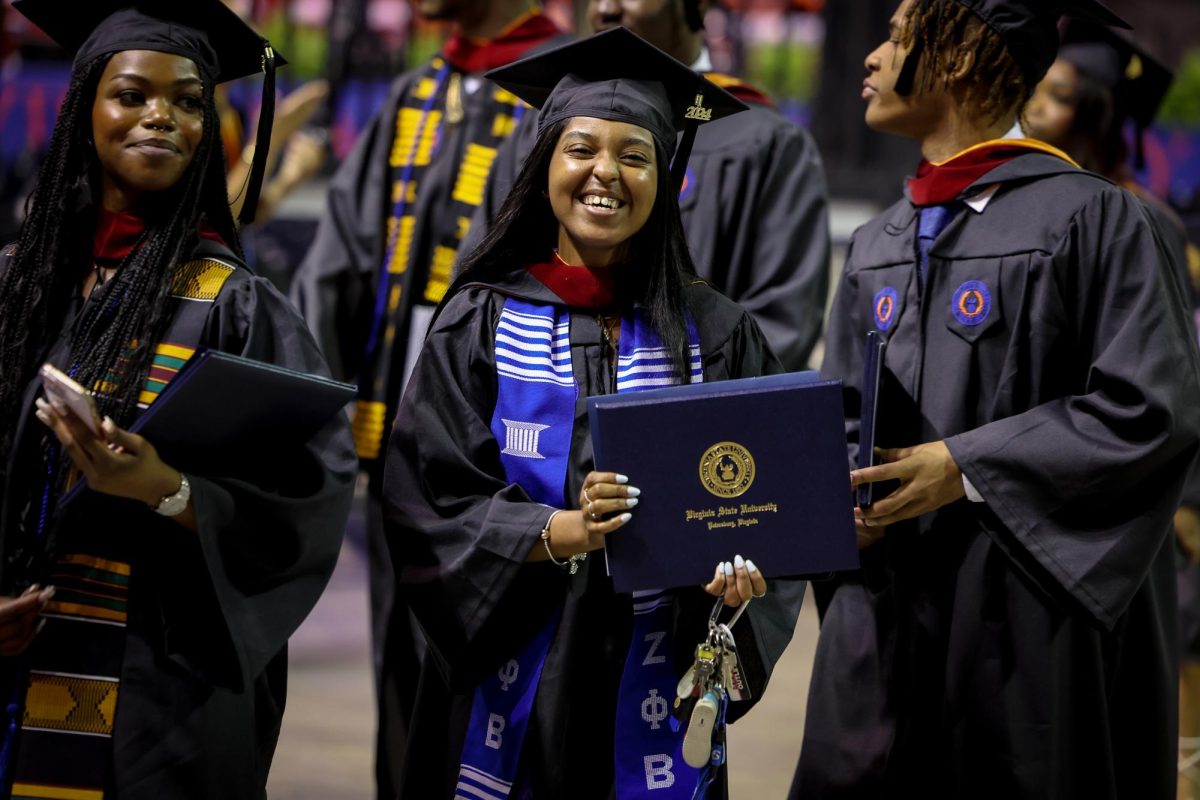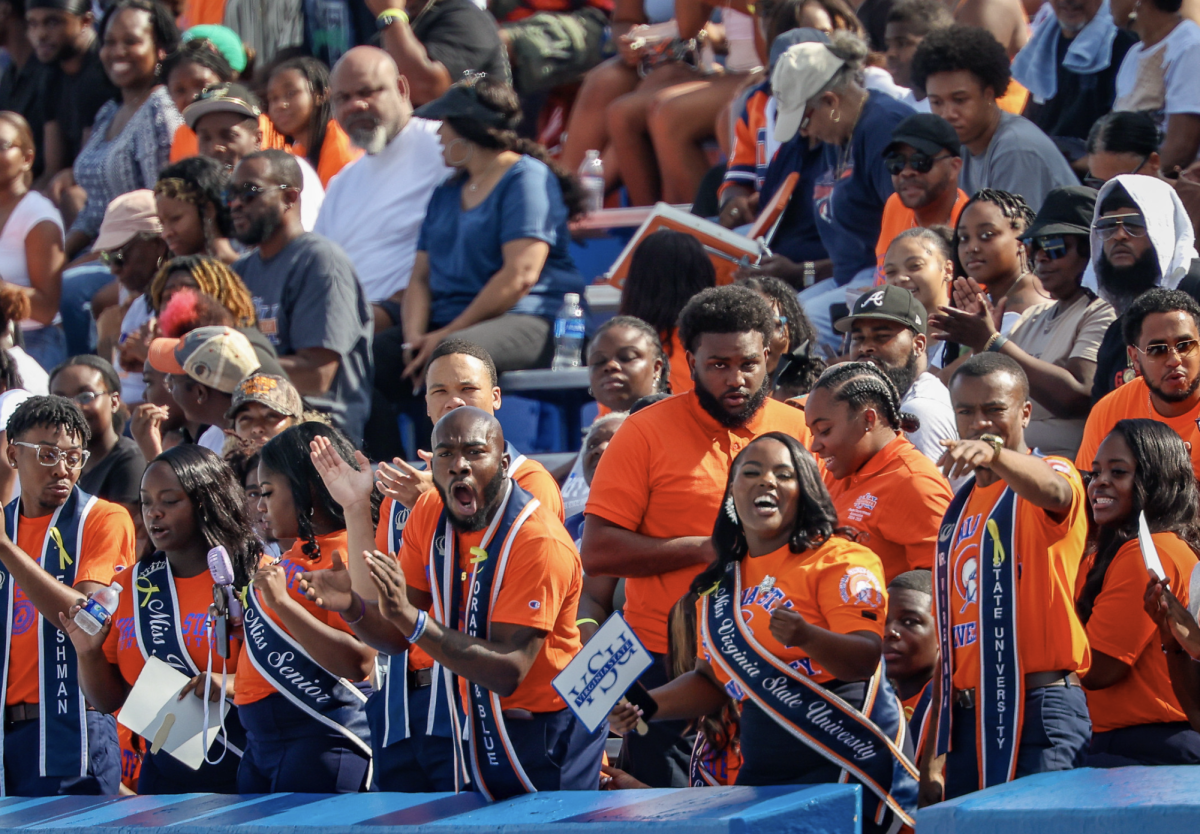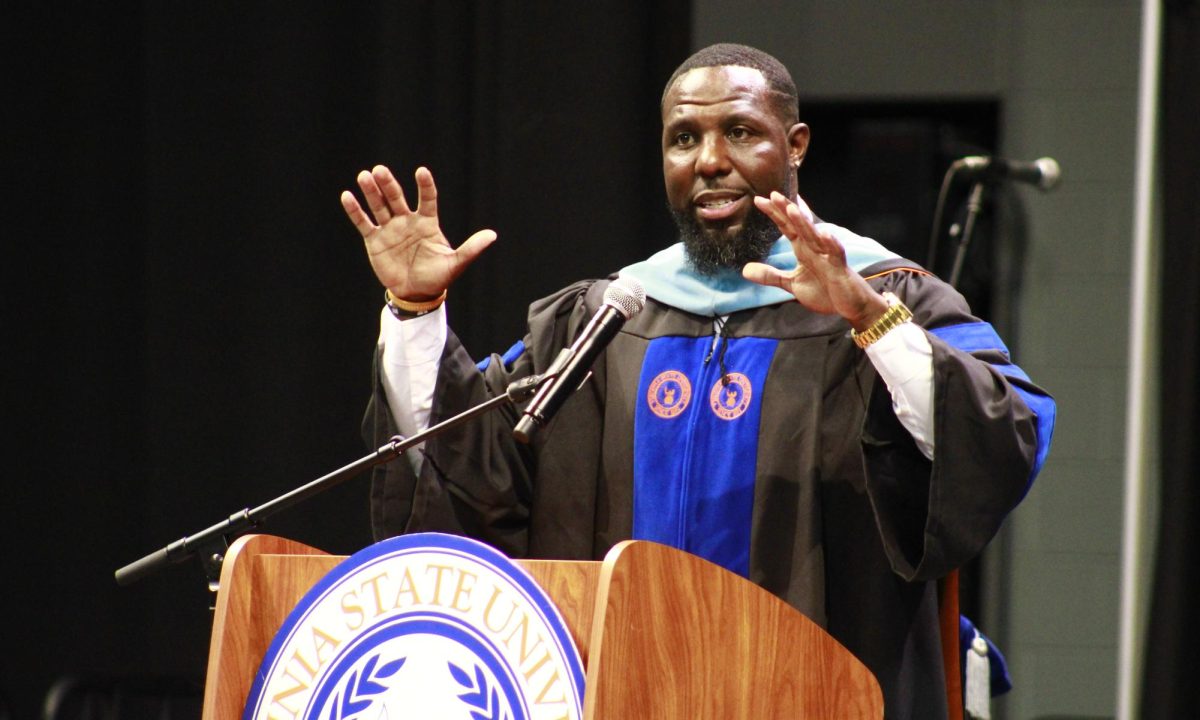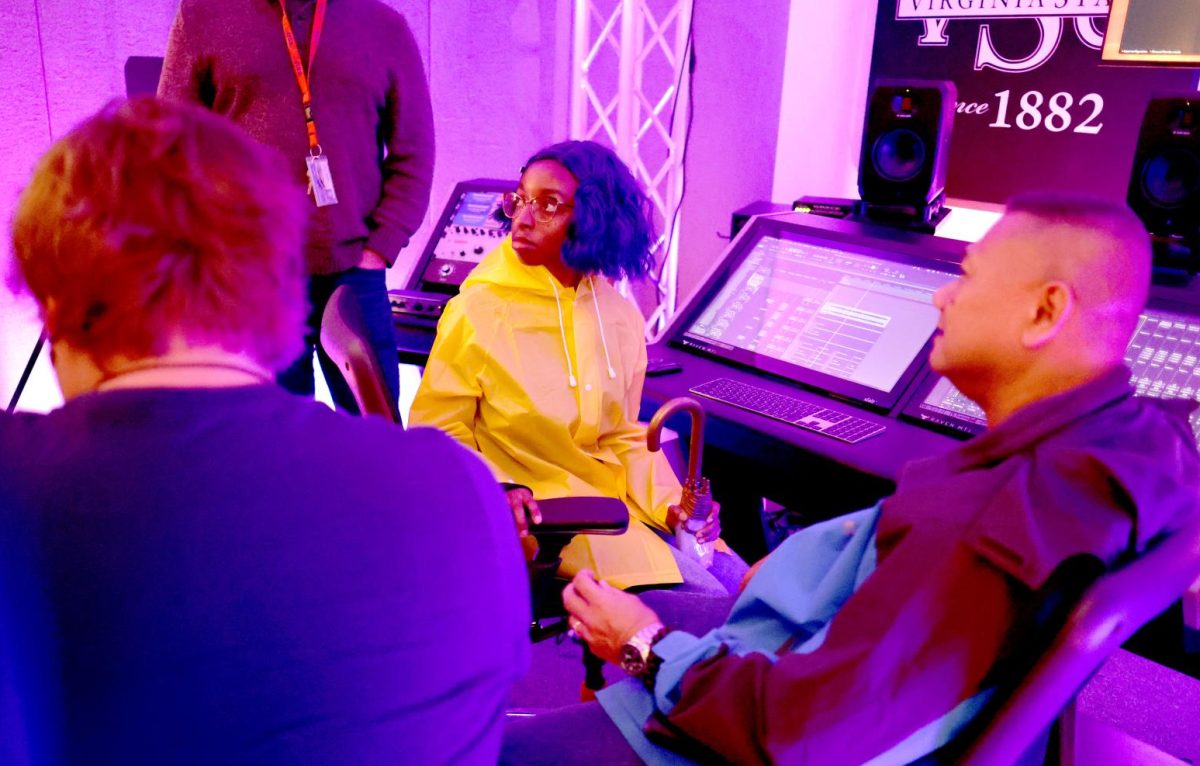The Virginia State University music department has made space for a new Atmos mixing room.
Atmos is a very advanced technology for audio mixing. Music department professor Wellington Gordon explains how advanced Atmos is.
“We used to think about 5.1, where you had five speakers that were horizontally placed, three in front of you and two in the back of you, plus a subwoofer,” Professor Gordon said. “That’s where the 0.1 comes in, and that was the standard for many, many, many years…now we are going 360 with sound.”
Professor Gordon explains that with the development of Atmos, musicians and producers can cram in many instruments between two speakers.
“What that does is it broadens the ability for your instruments to be located,” Gordon said.

Gordon explains that a great thing about Atmos is that a producer can broaden their panning in which they can have all of this extra space that’s immersive.
“The great thing about being able to mix in this immersive space is that we have a way to render it to a binaural experience,” Gordon said.
Gordon explains that when something is binaural, it has two speakers.
“So that means if you listen to headphones, that’s binaural, it’s two speakers, one for your left ear, one for your right ear, like headphones,” Gordon said. “Headphones are binaural.”
Gordon explains that one can also experience Atmos on their own without having to be in a studio or mixing room.
“You can do it right now on your phone,” Gordon said. “If you have iTunes music or any of your files, you can go into your settings and you can make sure that it’s set.”
Gordon also explains how significant it is for VSU to have an Atmos mixing room.
“We are one of the few schools in Virginia at least, and maybe perhaps the first HBCU to have an Atmos mixing room,” Gordon said.
New mixes of songs like Marvin Gaye’s “I Heard Through The Grapevine” will showcase how the listener feels like they are sitting in the middle of an orchestra playing. The guitar player may sound like he is performing on your left while the drummer is playing behind you.
Professor Dustin Painter and other faculty have been vital in develping the studio.
The music department hopes that in the future they can collaborate across curriculums at the university. And allow students from other disciplines the opportunity to implement this technology.













